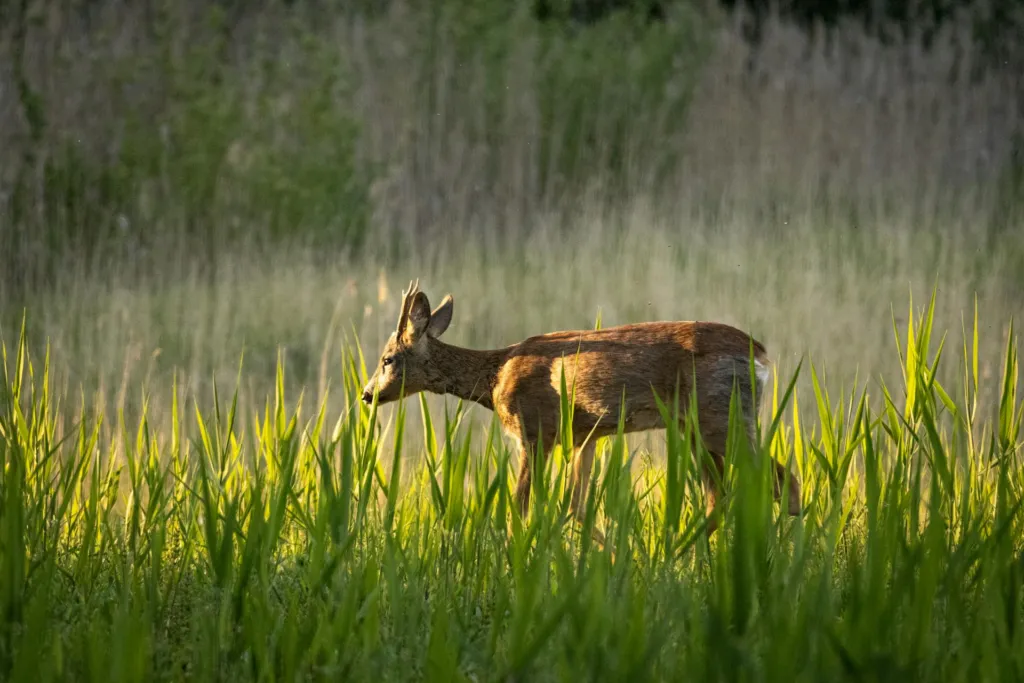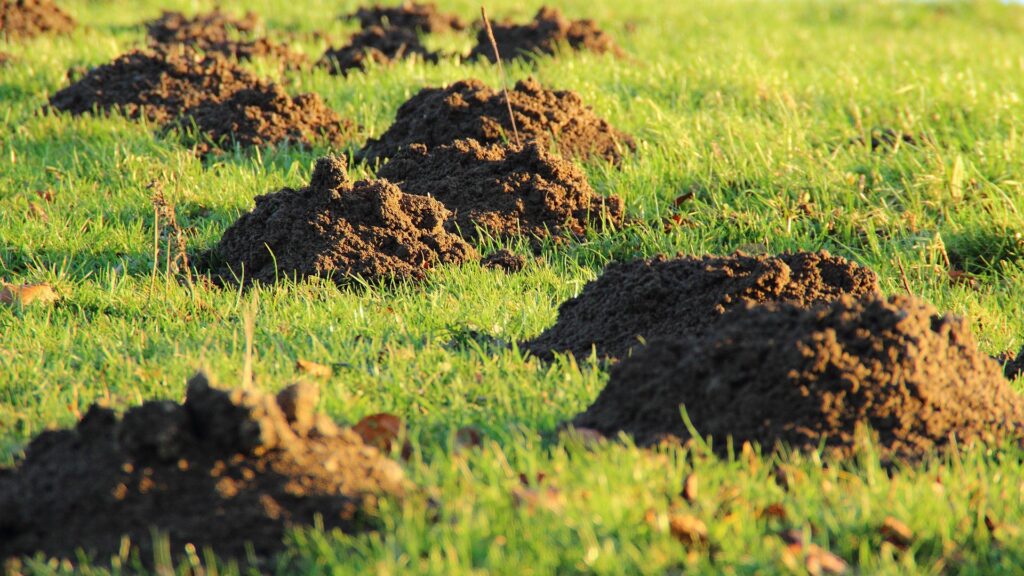
7 Practical Tricks to Deter Deer From Your Property
Discover Some Ways of Repelling Deer in Ohio & Michigan
Dealing with deer wrecking your yard? Maybe you think you scared them off, but they keep coming back. Or you've tried crazy deer hacks like soap bars and bags of human hair. Unfortunately, a hungry deer just doesn't care what wild deterrents you’re trying.
However, we're going to share some smart strategies that you may not have thought of. Use the seven deer repellent tips and tricks listed below to reclaim your landscape.
What’s So Bad About Having Deer on Your Property?
We know, we know. Deer are cute, and it’s tempting to enjoy wildlife viewing from your window. But letting deer get comfortable is asking for trouble. Want to convince them to go somewhere else? Here are some reasons to apply our deep repellent tips to any yard in Michigan and Ohio to make it deer-proof.
- They bring nasty parasites. Lyme disease is primarily spread by black-legged ticks, commonly referred to as deer ticks, which are often observed crawling next to deer. The likelihood that these ticks will land in your grass, on your family, or on your pets increases if you let deer roam your yard.
- They encourage tree diseases and pests. The way deer eat causes open wounds on your trees, tearing at the branches and bark. Fungal infections and unsightly insects can enter through these wounds, causing your trees to deteriorate over time or even die.
- Your flower beds and garden could be devastated. Nearly 500 different types of plants are consumed by deer. During the colder months, they feed about five times a day. When they see your yard as a reliable buffet that they can return to time and time again, the trees and plants you've spent years (and thousands of dollars) growing will be destroyed.
- They do more than just eat. Deer can trample gardens, compact soil, and topple delicate plants. During the fall rut, bucks will also rub their antlers on young trees, removing all the bark and often killing the tree.
What Does Deer Damage Look Like?
You have to first determine what’s consuming your plants in order to prevent deer damage in Ohio and Michigan. Most of the time, deer leave behind a few telltale signs.
- Damage to multiple plants. Deer aren’t picky eaters. In colder area (like Ohio and Michigan), they prefer to graze, sampling one or two plants before switching to the next. Instead of one or two plants entirely devoured, you'll probably find a lot of them slightly damaged. Your whole landscape is weakened by this pervasive nibbling, which also leaves plants vulnerable to disease.
- Scraped or scuffed up trees. In the fall, bucks rub the velvet from their antlers on the trunks of young trees with smooth bark. This rubbing completely removes the bark, exposing the fragile wood underneath. This "buck rub" is often a fatal blow to any tree because it girdles the trunk (rubs a circle around it) and lets pests and disease in.
- Plant damage at a similar height. Deer tear and pull at plants, leaving behind shredded leaves and stems. Why? Because they don’t have upper incisors. The damage isn't neat. Due to their height, deer typically inflict this damage from the ground up to five or six feet in the air. This makes it easier to rule out smaller animals that eat much lower to the ground, like rabbits and groundhogs.

Professional Deer Repellents vs DIY Options
It’s not a sign of weakness to acknowledge when a job has become too big. If you've tried everything and those bold deer are still dining in your yard, it may be time to call in the experts. In all honesty, this is the most effective deer repellent trick.
You’ll benefit from the following by contacting NexGreen.
- A thorough approach: We don't just spray and run. We can assess your entire property for vulnerabilities, from identifying your pain points to identifying the plants that attract deer the most.
- Rotation of resistance: Deer are intelligent. They might become used to just one repellent over time. Professionals use a rotating schedule of different deterrents to keep the deer from ever acclimating.
- Products not easily available: Commercial-grade repellents that are far more effective and long-lasting than anything on store shelves are available to us. These weather-resistant formulations are designed to withstand rain and snow as well. Ideal for Michigan and Ohio!
- Scientific know-how: Random spraying is insufficient. We target the prime browsing areas to let the local deer population know that there isn't any tasty food on your property.
7 Deer Repellent Ideas That May Actually Work
Repellents and scare devices are the most effective non-lethal methods of deterring deer. Since deer simply ignore deterrents once they become accustomed to them, you may need to switch between these deer repellent ideas.
- Build an eight-foot-tall fence.
A tall barrier is one of the most reliable physical solutions. Because deer are excellent jumpers, a fence must be at least eight feet high to effectively keep them out of your garden.
- Mow regularly
These adorable animals are less attracted to a well-kept lawn. Because they frequently seek cover in tall grass, deer feel exposed and vulnerable when browsing. They may find your yard uncomfortable if the grass is too short.
- Allow your dog to do its job
Dogs of all sizes naturally repel deer. This is because any deer will perceive a dog's scent and occasional bark as a "predator." Deer will therefore seek out a more tranquil spot to graze if you allow your family to take their dog outside.
- Get tree guards
Bucks that scratch your trees with their antlers need physical protection. They are prevented from removing the bark and causing irreparable damage by using plastic wraps or metal mesh cages as a barrier. Even better if the tree guard has a repellent with a scent!
- Try a nasty-tasting food
Strong taste repellents are preferable to those with weak scents. Formulas that contain putrescent egg solids or capsaicin, which is present in chili peppers, leave an unpleasant taste that alerts deer that your plants are not edible.
- Cut down of the available hiding spots
Deer feel most secure when they have an escape route close by. Brush piles and dense low-hanging shrubs can be pruned back to remove their sense of security and make them think twice about staying.
- Reach out to NexGreen
It's time to hire experts when DIY methods fail. NexGreen has the know-how, premium products, and well-thought-out plans to eradicate any lawn pest.

Deer Repellent FAQs
Which natural deer repellent is best?
Some of the best natural deer repellents use (or combine) dish soap, chives, garlic, lavender, and hot peppers.
Are deer deterred by lavender oil?
Deer may steer clear of lavender oil because of its bitter flavor. This is only a short-term fix, though.
Is it okay to use your deer deterrent near dogs?
Our deer deterrents are safe for pets and humane. These methods respect the environment, wildlife, pets, and your property without resorting to cruelty.
Is the deer repellent you use toxic?
No. Our cruelty-free, non-toxic methods deter wildlife without putting your pets or the animals themselves in danger.
In Ohio and Michigan, when is the best time to apply deer repellent?
September is when deer repellent is most effective.
Are deer scared off by vinegar?
Even though they dislike the potent, acidic smell of vinegar, it usually only serves as a short-term deterrent.
Now’s the Time to Send the Deer Running Away!
Investing in a professional deer deterrent program is necessary. It protects the thousands of dollars you've spent on landscaping and saves you from endless hours of frustration.
If you try these deer repellent tricks but need more help with lawn care or pest control, reach out to NexGreen today! We offer lawn care services in Ohio communities around the areas of Westerville, OH and Columbus, OH.
We also provide pest control and lawn care services in Michigan for areas near Sterling Heights, MI and Rochester Mills, MI.
